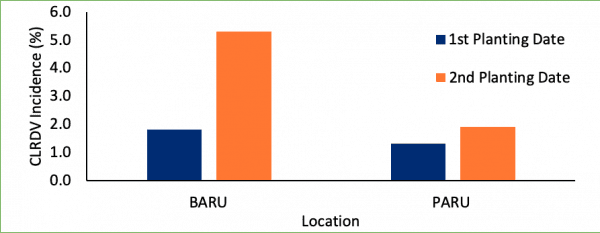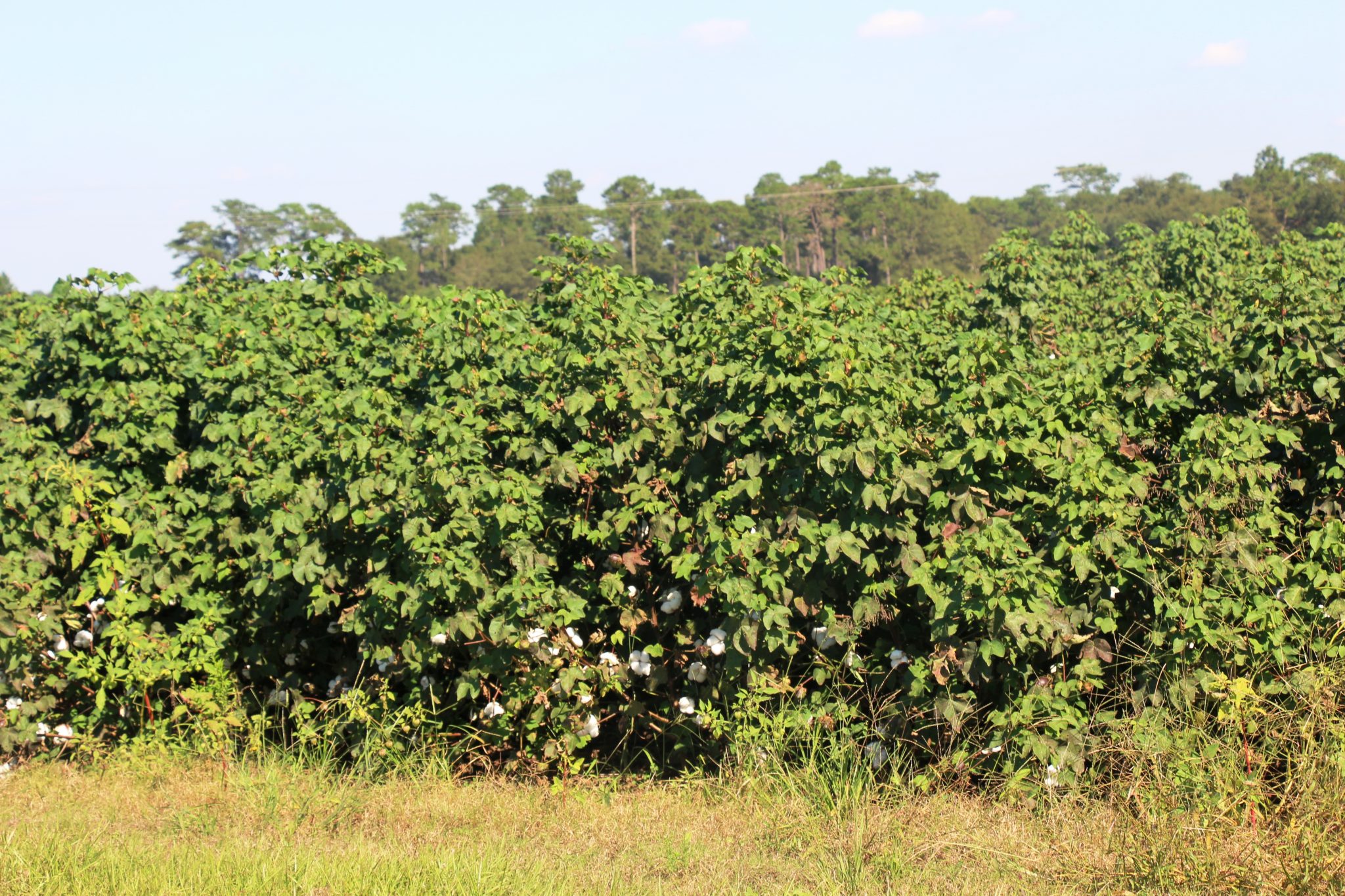Crop Production

Cotton leafroll dwarf disease (CLRDD), caused by the aphid-transmitted Cotton leafroll dwarf virus (US-CLRDV), was first identified in the US in samples collected from Barbour County, Alabama in 2017. In subsequent years, the virus has spread across the Cotton Belt as far west as Texas and north to Virginia.
Cotton Leafroll Dwarf Disease
CLRDD can be difficult to diagnose as symptom expression can vary by cultivar, cotton growth stage, soil fertility, environment, and geographic region. CLRDD can also be difficult to differentiate from symptoms of insect damage, nutrient deficiencies, drought stress, herbicide damage, and other disorders. CLRDV has yet to cause widespread damage in the U.S. but yield losses of up to 80 percent in susceptible varieties have been reported from South America. In Alabama, yield losses can vary from 0 to 30 percent and later planted cotton seems to be more at risk for yield impacts.
2020 Sentinel Plots
In 2020, sentinel plots were established at five AAES Outlying Research Units (the Wiregrass Research and Extension Center in Headland, Brewton Agricultural Research Unit in Brewton, Gulf Coast Research and Extension Center in Fairhope, Prattville Agricultural Research Unit in Prattville, and Tennessee Valley Research and Extension Center in Belle Mina). These sentinel plots served as an early warning system and allowed us to monitor CLRDV incidence, symptom expression, disease progression, aphid pressure, and yield impacts throughout the season.
Overall, 2020 was a mild year for the virus and had little effect on the overall U.S. cotton production. Aphid pressure was also lower throughout the southeast in 2020. CLRDV incidence was greatest in southwest Alabama declining rapidly when you moved towards central Alabama to near zero in the Tennessee Valley. Five cotton varieties (Deltapine 1646, Phytogen 480, DynaGro 3615, Deltapine 359, and an experimental breeding line) were used in the sentinel plots and all five varieties tested positive for CLRDV. However, incidence was highest in cotton varieties PHY 480 and DP 1646. At two locations (BARU and PARU), the impact of planting date (early vs. late) was also evaluated and CLRDV incidence was higher in the late planted cotton (June 1) than early planted cotton (May 1) (Figure 1).

Figure 1. CLRDD incidence (% symptomatic plants confirmed by PCR) as influenced by planting date at Brewton Agricultural Research Unit (BARU) and Prattville Agricultural Research Unit (PARU).
Findings
In terms of short-term management strategies, extension specialists recommend planting early in areas of Alabama that are at high risk for infection and keeping cotton as healthy as possible to reduce plant stress. Cotton stalk destruction in combination with an aggressive weed control program may also help in delaying virus movement from overwintering hosts into cotton. In the long term, efforts are focused on the establishment of resistant cotton varieties and breeding trials are being conducted to evaluate a wide range of germplasm. For more information on CLRDD please visit ANR-2539-A New Virus Disease in Alabama Cotton.

